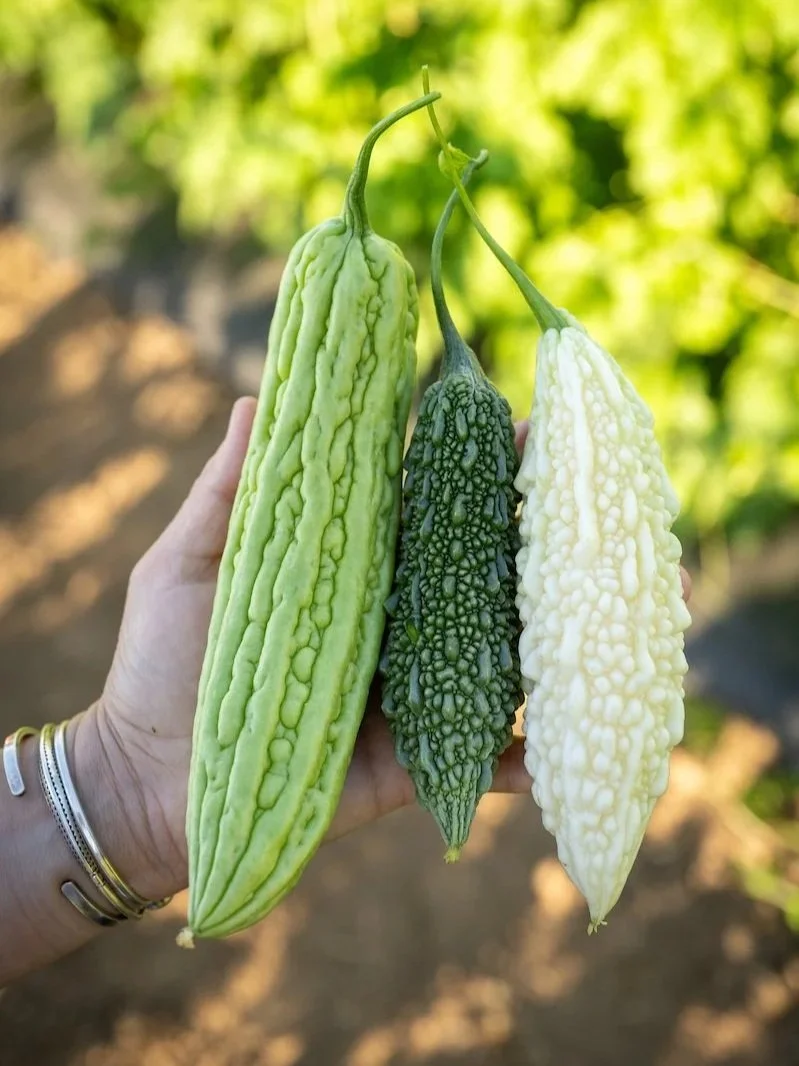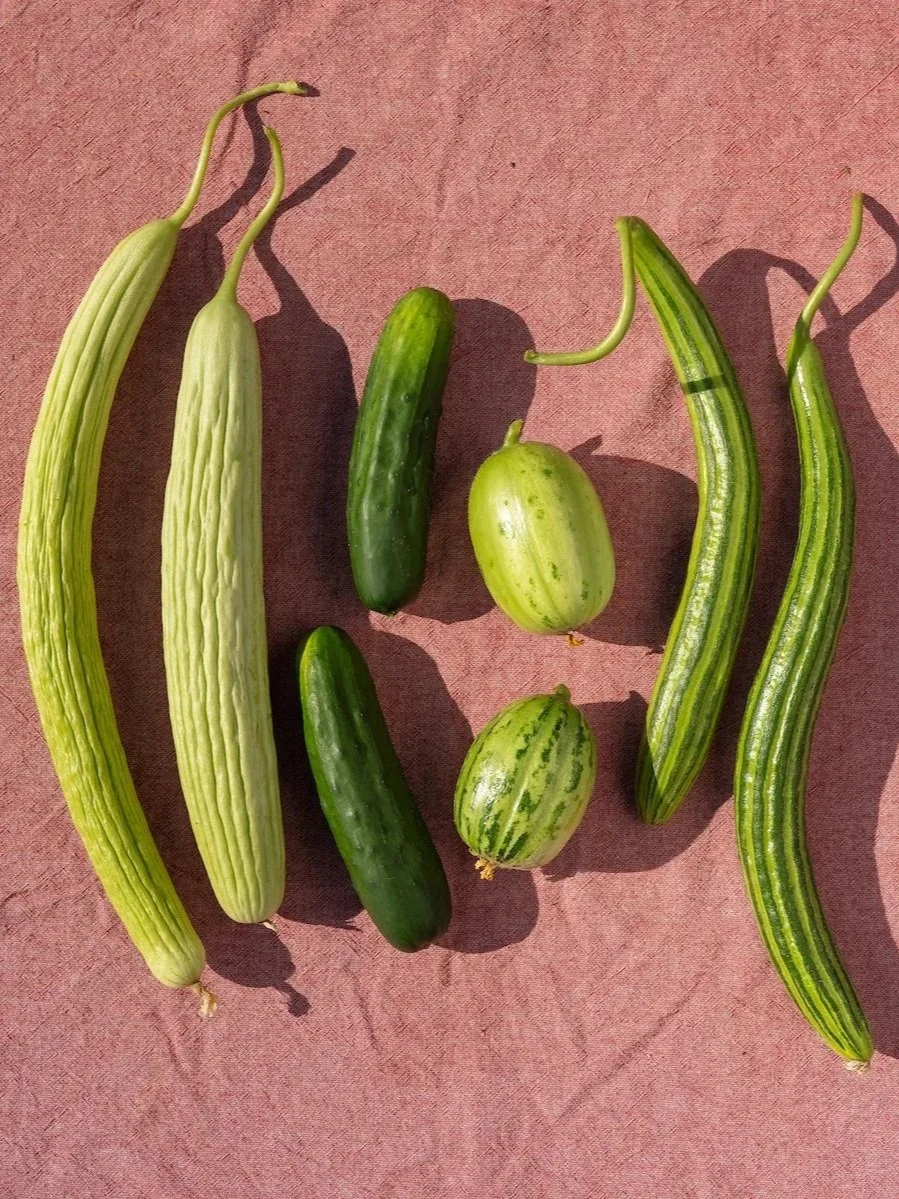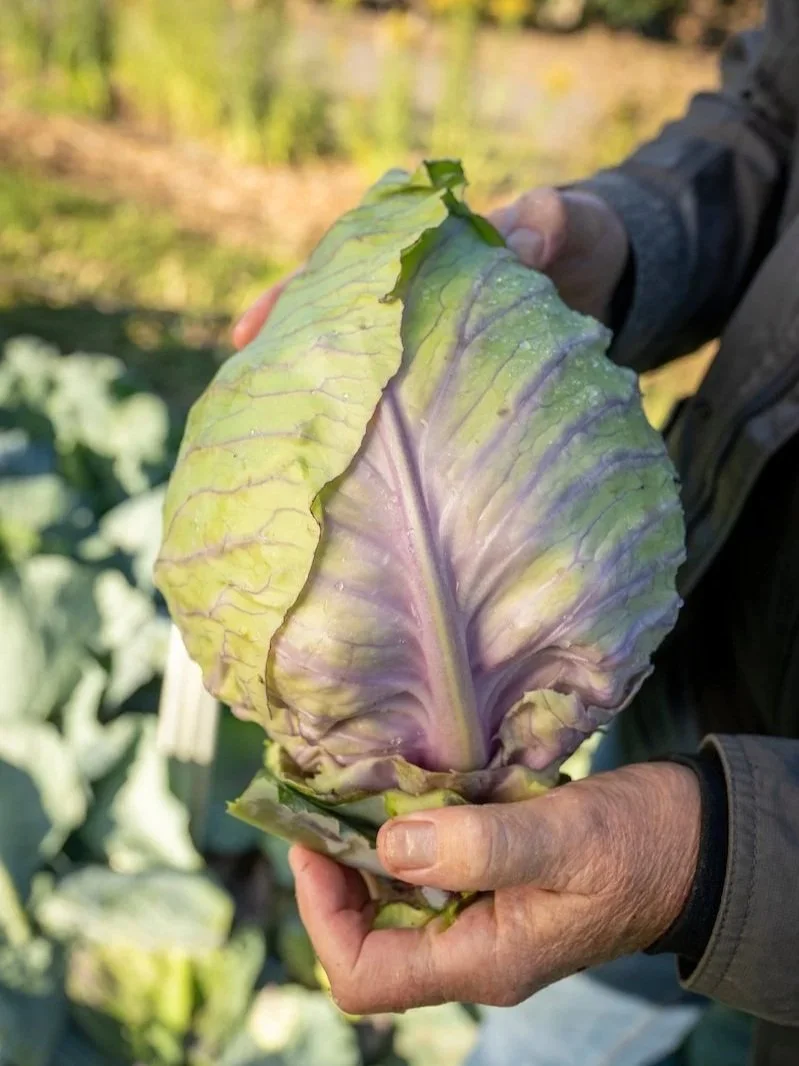Breaking Vegetable Boundaries
A fresh wave of organic vegetables is coming.
Breaking Vegetable Boundaries is reimagining how vegetables are bred—crossing market classes, species, and even cultural boundaries to expand flavor, resilience, and beauty in organic crops. Six breeding projects explore new genetic and culinary territory, connecting plant breeders, farmers, and eaters through innovation and diversity.
Funded by a USDA Organic Research and Extension Initiative grant, and led by Cornell plant breeders Michael Mazourek and Phillip Griffiths, along with experts from Auburn University, Clemson University, Oregon State University, and the Culinary Breeding Network, this project aims to create new market opportunities and improve environmental resilience. The team blends rigorous breeding with nutrition and flavor research, on-farm trials, and real-world tastings to bring more diversity and better flavor to meet the demands of today’s consumers.
What we hope to accomplish:
More profitable options for growers through novel, marketable crops
Healthier farms with improved pest management and reduced water needs
Produce that’s selected for nutrition, appearance, and flavor—not just yield and transport
Public and farmer engagement from field to table: field days, pop-ups, culinary events and storytelling to build demand
Dive into each crop below to see what’s being tested, tasted, and ready to grow—then help us push vegetables into new territory.
Follow @culinarybreedingnetwork for updates or reach out to get involved.
Bitter Gourd
Crossing Cultures and Climates
Bitter gourd (also known as bitter melon) is a staple in cuisines across Southeast Asia, India, Africa, and Latin America. While its distinctive bitterness is an acquired taste, many appreciate how beautifully it balances with other ingredients. Beyond its culinary appeal, bitter gourd is valued for its nutritional and medicinal properties, including potential anti-diabetic and anti-cancer benefits.
In trials conducted in New York, this crop has shown impressive natural resistance to insects and disease. With growing demand among diverse communities and adventurous eaters in the U.S., this project aims to adapt bitter gourd for organic production—developing new varieties that preserve authentic flavor while improving resilience and accessibility for growers and consumers alike.
Cucumber Melon
Merging Harvest and Flavor
This project builds on earlier work with the ‘Trifecta’ muskmelon, which combines disease and pest resistance with outstanding sweetness and productivity. While muskmelons thrive with irrigation, their relative, the Armenian cucumber (a Middle Eastern melon harvested young), is naturally drought-tolerant and prized for its crisp texture.
By crossing these two melon types, the project is exploring a spectrum of new flavors and textures—bridging juicy sweetness with refreshing crunch. The resulting dual-purpose cucumber-melons promise resilient plants for growers and unique culinary experiences for consumers.
Peppers
Bridging Food Cultures and Flavor Trends
Decades of breeding work have strengthened the foundation for organic bell peppers, including varieties like Peacework, King Crimson, and Crimson Carillon—all bred for exceptional disease resistance and flavor. While sweet bell peppers remain popular for their size and mildness, today’s consumers are increasingly drawn to the vibrant flavor and heat of smaller, spicier types. This project brings those worlds together—crossing sweet and hot pepper classes to create resilient, organic varieties that deliver beauty, balance, and a spark of spice.
LEAFY BRASSICAS
Bridging Kale and Collards Worlds
Lacinato, or Tuscan kale, has become a favorite for fresh salads thanks to its distinctive texture, lasting freshness, and satisfying crunch. Collards, on the other hand, are traditionally enjoyed cooked and serve a different audience. New Tuscan collard selections are bringing the best of both crops together—offering improved yield, vigor, and shelf life. By combining the sweet, tender, and heat-tolerant traits of collards with the sturdy, textured leaves of kale, this new class of greens delivers versatility for both fresh and cooked dishes.
Rosé Cabbage
A Color and Nutrition Crossover
This breeding project explores the intersection of beauty and nutrition by developing rose-colored cabbages. By crossing traditional green types with naturally pigmented varieties, breeders are creating open-pollinated and hybrid lines that range from delicate blush to deep pink.
These new rose cabbages offer fresh visual appeal and enhanced nutritional value, while softening the dense texture often found in red cabbage. The result is a vibrant, versatile, and affordable crop that brings color and flavor to both farms and tables.
Tuscan Broccoli
A Dual-Harvest Innovation
Building on earlier work combining Tuscan kale with heat-tolerant broccoli, this project is creating a new annual crop that bridges two beloved Brassica types. The result is an innovative “dual-harvest” variety that allows growers to collect both broccoli crowns and tender, textured leaves ideal for fresh salad markets.
This fusion offers greater efficiency for farmers, expanded culinary versatility, and a new way for consumers to enjoy the flavor and nutrition of broccoli and kale in one beautiful plant.







